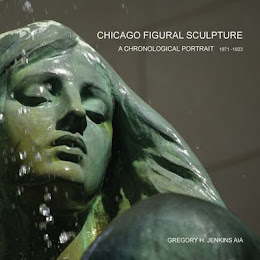I've received three phone calls since my last post: a list of Henry Hering's Sculpture in Chronological order. With no pictures. All three phone calls had the same gist: if you expect your blog to survive (ie "keep traffic") you're going to have to do better than that. Okay. I've read about this stuff too. Chicago Art Magazine knows the value a "sandbox fight." I, too, have seen them in action. (Argghhh. Grrrrr.) And there's the scare tactic. But its the day after Christmas and I don't feel so scary. And why even try when there's PORNOGRAPHY. Pornography always sells.
So in order to make up for that Hering thing, today I post NAKED MEN AND WOMEN and list them as "keywords." The photographs are a study of Lorado Taft's 1907 "Pastoral" at the Garfield Park Conservatory. The fern garden, today, was A VERY STEAMY PLACE.
.
We probably would have "gotten it" without the rabbit. Come to think about it, Lorado Taft's work is still "suggestive." Taft's "Fountain of the Great Lakes" actually brought about a review of the City of Chicago's Obscenity Ordinance. "Solitude of the Soul still evokes comment. The additional publicity brought both fame and notoriety to Taft. Maybe, maybe the tactic will work again.
Taft and Hering had much in common. Both are early twentieth century sculptors with significant bodies (another keyword) of work in Chicago. Both worked in "Studios" with a team of sculptors: Hering in the Cornish, Taft at the Midway. And both failed to make the transition to Deco. (eg. failed to monetize their product).
I'm glad I have a sense of humor.
.







































































